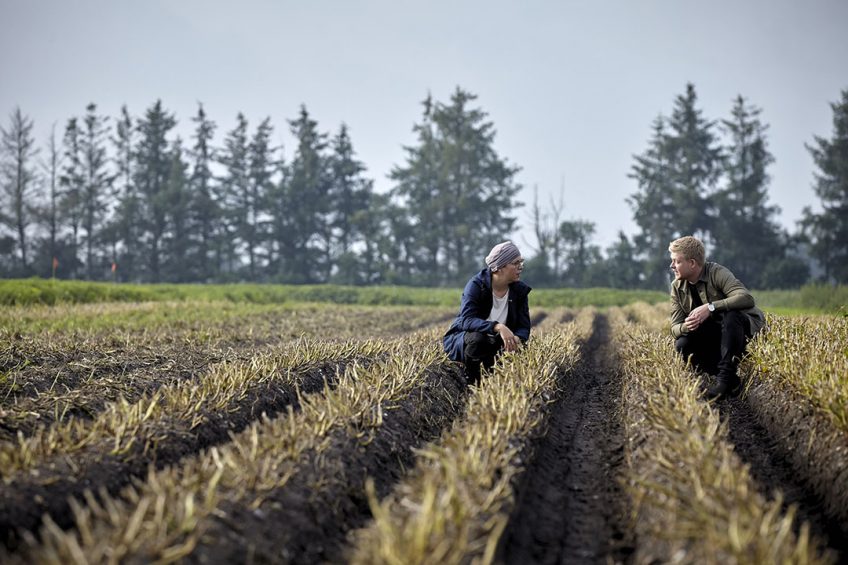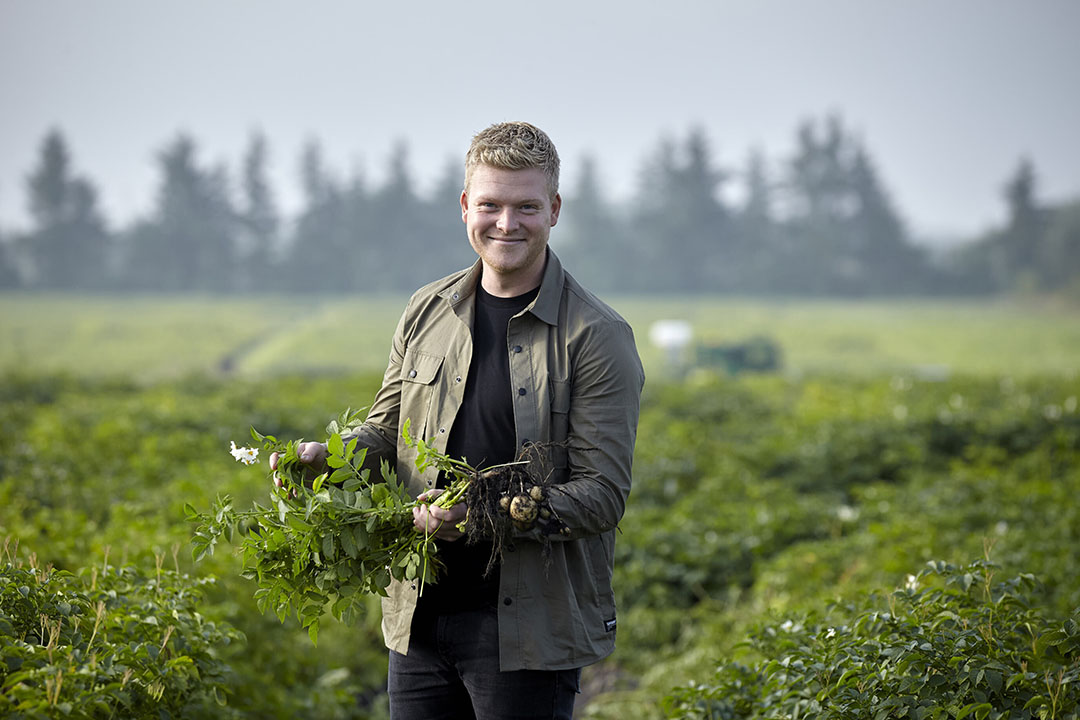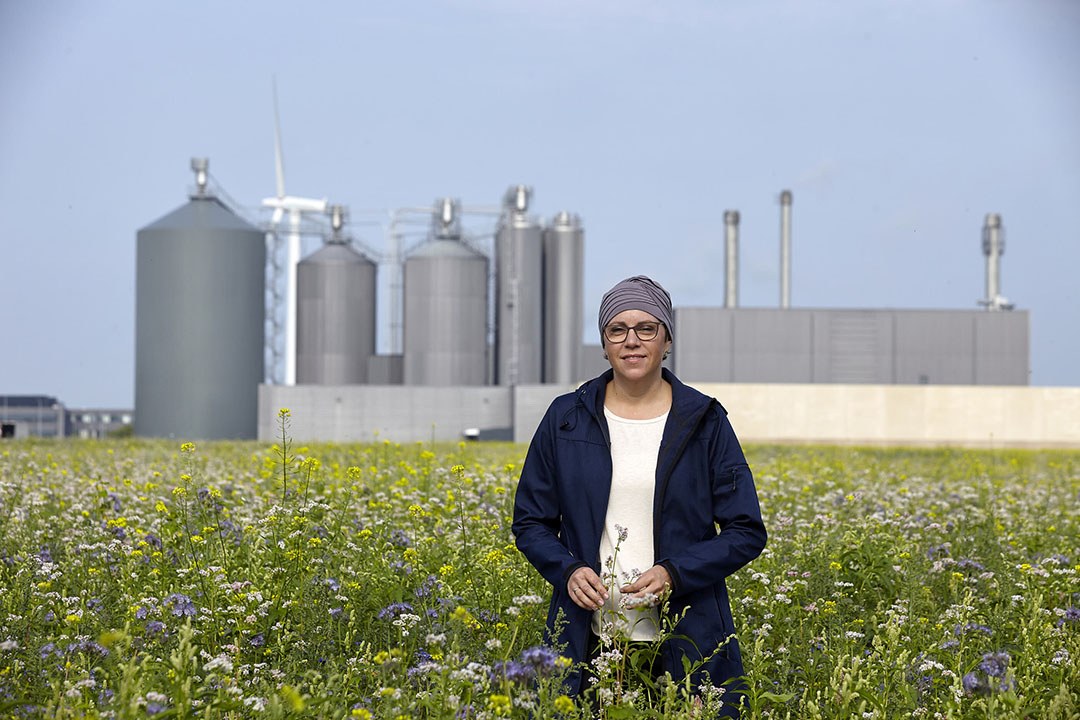Potato starch becomes versatile new pellet binder

A new pellet binder, made from modified potato starch, not only creates a better quality feed pellet, it also adds easily digestible energy to the feed. All About Feed caught up with the Danish team behind this new pellet binder to learn more.
KMC is owned by Danish potato farmers, and specialised in turning potato protein and starch into highly valuable products for use in food, livestock feed and pet food. Annette Lykke Voergaard, agronomist and Rune Friis Kristensen, Commercial Manager work at the Feed and Pet Food division of KMC and have been working on an exciting new application of potato starch lately. “At KMC, we modify potato starch in such a way that it becomes a highly digestible energy source, ideal for piglet feed to promote growth while avoiding undigested excess starch in order to support the right intestinal conditions. But we found that this ingredient is also an excellent pellet binder and adds many other benefits to the process as well,” explains Voergaard.

The shrink challenge
The incentive for KMC to develop a new pellet binder is to help feed millers prevent unnecessary loss of nutrients during processing and storage and better control over the moisture. Kristensen explains: “To produce high quality feed pellets, the right combination of steam and water should be used. Not only to stimulate a homogenous mixture of the feed mass, but also make sure the starches gelatinise to the fullest by taking up moisture. When you can make sure the moisture is evenly distributed in the feed pellet, you prevent production shrink during processing or during storage. 10 tons of feed pellets stored in a silo can easily be reduced by hundreds of kilos in 2 weeks’ time due to water evaporation. Furthermore, if the pellets are not bonded properly, there will be a large part of fines, which may cause problems in different areas – nutritionally and economically in regard to feed spillage.
Chemical binders don’t have any nutritional value and take up important space in the recipe. It is a so-called blank ingredient
Adding extra water can prevent this, but most equipment cannot handle lots of extra water and also takes up valuable space in the feed formulation. This is why feed mills often add (chemical) pellet binders to control this process. Voergaard adds: “The problem is that chemical binders don’t have any nutritional value and take up important space in the recipe. It is a so-called blank ingredient. Adding 1% of a chemical pellet binder means that you have to compensate this by increasing the energy concentration of the feed. What if we can apply a non-chemical pellet binder that also adds nutritional value?” KMC combined its long lasting expertise in potato starch and added the learnings from the use of potato starches in the food as gelling and stabilising agents that led to a new non-chemical pellet binder for the feed industry.
Looking inside the pellet
KMC performed a trial earlier this year to compare its new modified potato starch pellet binder with a commonly used chemical pellet binder (lignosulfonate). Kristensen: “Of course we looked at the physical durability of the pellet (Pellet Durability index: PDI) and the hardness (Kahl), but primarily we looked inside the feed pellet to determine moisture distribution and state of starch gelatinisation at different processing temperatures. The different temperatures were chosen to mimic the diversity within the feed industry’s feed processing. Determination of the surface of the pellet and the cutting edge doesn’t tell you the full story when it comes to moisture distribution. We therefore used microscopic imaging that takes images of the pellet under a microscope. It allowed us to see to what degree the starch is gelatinised and what effect sub-processes have on the feed pellet determined by the formation of crystals (absence of gelatinisation) or gel structures (successful gelatinisation).”
We used microscopic imaging to look inside the pellet. This is a new way of looking at feed pellets and gives valuable information on gelatinisation
Voergaard adds: “With the microscopic imaging, we obtained valuable knowledge on the hydration level that provides us insights into how the individual agents affect the binding ability. It is a different way of looking at the pellet.” The trial and associated imaging showed that – compared to the chemical binder – the potato starch binder resulted in a better moisture distribution and a lighter colour, which indicates less Maillard product (heat damage) and therefore associated nutrient value loss. Kristensen adds: “Using the potato starch binder also showed a better PDI of the pellets at a lower processing temperature compared to the chemical binder. Interestingly, our binder also led to easier cleaning of the machinery after processing (less dust) and less friction (which could in theory lead to less energy consumption).”

Talking PDI and nutrition
The new potato starch binder is already on the market and has since then sparked the interest of several large feed mills in Europe, who are currently testing the binder for their own specific processing conditions. KMC is also preparing follow-up trials in December 2021 to look at more processing parameters and the effect of shrinkage over time. Kristensen: “Our new pellet binder is a very technical product and the implementation per feed mill is always tailor-made. But the goal for most feed mills is the same: better control of water (moisture) to better to reduce shrinkage and nutrient losses and not to forget; an efficient pellet binder when needed.”
Pellet quality
Voergaard adds that optimisation of the feed processing is very important to be able to optimise feed and produce cost-effective diets. “In feed processing, you can easily damage and loose valuable nutrients. Too often we focus on the PDI alone when we talk about pellet quality. Although PDI is a recognised parameter within the feed industry and everyone understands it, it doesn’t say anything about the nutritional value of the pellet, whether the moisture is distributed well within the pellet and if the starch is gelatinised to the fullest. We should not forget that our goal is to feed animals and supply them with all the necessary nutrients they need, while formulating cost effective diets. We hope that with our new pellet binder concept we also open up the discussion between feed millers and nutritionists to talk PDI, but also discuss more often how we can optimise and maintain the nutritional value of the feed pellet during processing,” Voergaard concludes.







